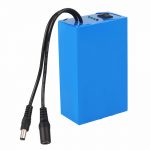Lithium batteries have become a common part of our lives, and it’s not just in our electronic gadgets. By 2020, 55% of lithium-ion batteries sold are expected to be for the automotive industry. The number of these batteries and their use in our everyday lives makes battery safety an important consideration. Here’s what you need to know about safety and lithium batteries. Types of Lithium Batteries Before going into battery safety, it helps to answer the question, “How do batteries work? Lithium batteries operate by moving lithium ions between positive and negative electrodes. During discharge, the flow is from the negative electrode (or anode) to the positive electrode (or cathode), and vice versa when the battery is charging. The third major component of batteries are the electrolytes. The most familiar type is the rechargeable lithium-ion battery. Some of these batteries have single cells, while others have multiple connected cells. Battery safety, capacity, and usage are all impacted by how those cells are arranged, and which materials are used to make the battery components. From a safety perspective, lithium iron phosphate (LiFePO4) batteries are more stable than other types. They can withstand higher temperatures, short circuits, and overcharging without combustion. This is important for any kind of battery, but especially ones for high power applications, such as an RV battery. With that in mind, let’s look at ways of handling these batteries safely. 1: Stay Out of the Heat Batteries operate best in temperatures that are also comfortable for people, around 20°C (68°F). You’ll still have plenty of lithium power at higher temperatures, but once you get past 40°C (104°F), the electrodes may start to degrade. The exact temperature differs based on the type of battery. Lithium iron phosphate batteries can operate safely at 60°C (140°F), but even they will suffer problems after that. If ...
Read More…

![]() 100% secure payment
100% secure payment![]()
